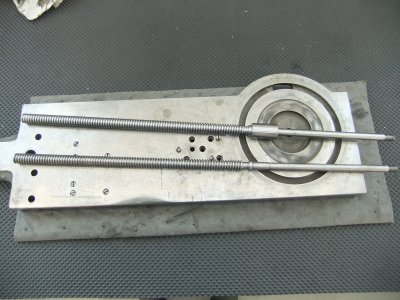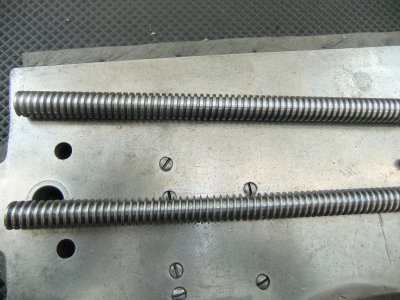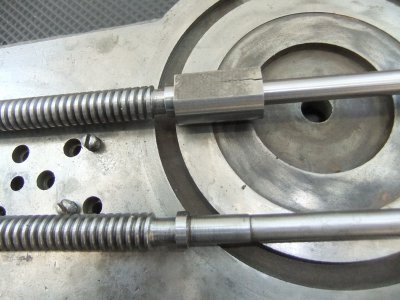Hi All!
I am in the process of making a small mill feed screw for the Edelstaal Lathe. Original equipment was a 7/16" x 20TPI LH threaded screw.
I have sourced the easiest material I could find. 1\2" cold rolled turned to a couple thousanths under .4375". Bought a Polish made adjustable die for cutting the threads. At this point I have about a half inch of fairly perfect looking threads on the end of the stock now, (Looks perfect to my inexperienced eye, anyway.) and I think I'm ready to start threading the rest of it as soon as I get the rest of it to diameter.
Plenty of cutting oil, and taking my time making the threads. Forward 1/4 turn, back 3/4. I'm really impressed with the results so far. Only another 15" to go and I hope the die holds up... Going to use lots of oil...
For the part that the screw will thread into, I got a hold of some 954 bronze off of flea bay. I was balancing cost\functionality and, I realize that this probably isn't the ideal mix of materials, but my question is will either of the 2 dissimilar materials pose a problem as far as longevity of the parts, premature wear, etc, or am I just asking for trouble?
Anything else I should be aware of here?
Not oilite bronze, but I have no problem using lube on it if need be.
Should the CRS be hardened\tempered after machining, or can I leave it as it is?
I'm struggling with understanding materials and compatible material that goes with other materials and such.
Any understanding anyone could share would be most appreciated.
If it wears out too soon, I'll make another from the correct materials
I am in the process of making a small mill feed screw for the Edelstaal Lathe. Original equipment was a 7/16" x 20TPI LH threaded screw.
I have sourced the easiest material I could find. 1\2" cold rolled turned to a couple thousanths under .4375". Bought a Polish made adjustable die for cutting the threads. At this point I have about a half inch of fairly perfect looking threads on the end of the stock now, (Looks perfect to my inexperienced eye, anyway.) and I think I'm ready to start threading the rest of it as soon as I get the rest of it to diameter.
Plenty of cutting oil, and taking my time making the threads. Forward 1/4 turn, back 3/4. I'm really impressed with the results so far. Only another 15" to go and I hope the die holds up... Going to use lots of oil...
For the part that the screw will thread into, I got a hold of some 954 bronze off of flea bay. I was balancing cost\functionality and, I realize that this probably isn't the ideal mix of materials, but my question is will either of the 2 dissimilar materials pose a problem as far as longevity of the parts, premature wear, etc, or am I just asking for trouble?
Anything else I should be aware of here?
Not oilite bronze, but I have no problem using lube on it if need be.
Should the CRS be hardened\tempered after machining, or can I leave it as it is?
I'm struggling with understanding materials and compatible material that goes with other materials and such.
Any understanding anyone could share would be most appreciated.
If it wears out too soon, I'll make another from the correct materials





